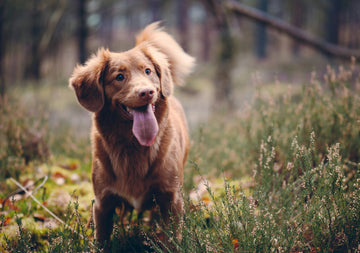As pet parents, we often say our furry friends are part of the family. We carefully choose their food, keep their toys clean, and make sure they get enough exercise. But there’s one hidden danger that many people overlook — toxic plants. A single curious bite from a leaf or flower can turn into an emergency.
At Bobopal, we not only care about making safe and comfortable products like our hands-free dog leash, we also care about sharing knowledge that keeps pets safe in every aspect of their lives. After all, a healthy pet is a happy adventure partner.
Common Houseplants That Can Put Pets at Risk
Greenery makes our homes feel alive, but some popular houseplants carry silent risks for dogs and cats. Here are a few examples:
Lilies (extremely toxic to cats)
Just a few grains of pollen can cause kidney failure.
Aloe Vera
Great for human skin, but it can upset your pet’s stomach.
Pothos (Devil’s Ivy)
Causes irritation and swelling in the mouth and throat.
Sago Palm
Beautiful but deadly — it contains toxins that can lead to liver failure.
Dieffenbachia (Dumb Cane)
Leads to drooling, swelling, and breathing difficulties.
👉 Think of these as “wolves in sheep’s clothing” — plants that look harmless but can turn dangerous for your pet in seconds.
Outdoor Plants to Watch Out For
Walks in the park or playtime in the backyard are precious bonding moments. But the outdoors hides its own threats. Some common outdoor plants include:
-
Oleander – just a nibble can be fatal.
-
Azaleas & Rhododendrons – affect the heart and nervous system.
-
Foxglove – interferes with heart function.
-
Daffodils – cause digestive distress.
-
Tomato plants (leaves & stems) – can cause weakness and confusion.
This doesn’t mean you have to avoid nature altogether. Instead, it’s about being aware. That’s also why a secure, comfortable leash — like the Bobopal hands-free dog leash — makes outdoor walks safer, giving you more control while your dog explores.
Warning Signs of Plant Poisoning
Your pet can’t tell you what they ate, but their body will. Be alert for:
-
Vomiting or diarrhea
-
Excessive drooling
-
Lethargy or weakness
-
Breathing difficulties
-
Tremors or seizures
-
Irregular heartbeat
⚠️ If you notice any of these symptoms, seek veterinary care immediately. Quick action can save lives.
What to Do If Your Pet Ingests a Toxic Plant
-
Identify the plant – take a photo or sample with you.
-
Call your veterinarian – never delay professional advice.
-
Don’t induce vomiting unless instructed – some toxins worsen if vomited.
-
Stay calm and monitor – comfort your pet on the way to the clinic.
Tips to Keep Pets Safe Around Plants
-
Choose pet-friendly plants – spider plants, ferns, or bamboo are good options.
-
Place toxic plants out of reach – high shelves or hanging baskets can help.
-
Train your pet to avoid plants – positive reinforcement works wonders.
-
Check your outdoor space – remove dangerous plants before playtime.
And of course, when you’re outside, keep your pet close. A sturdy, comfortable leash means you can enjoy the fresh air together without worrying about them dashing into a flowerbed full of toxic plants. That’s exactly why we designed the Bobopal hands-free leash — freedom for you, safety for them.
Final Thoughts
Protecting pets from dangerous plants is about awareness, prevention, and quick response. Every walk, every cuddle, every playful moment becomes more joyful when you know your four-legged friend is safe.
At Bobopal, we believe pet safety doesn’t stop at home — it continues outdoors, on every walk and every adventure. By choosing the right plants, staying alert to warning signs, and keeping control during outdoor time, you’re giving your pet the gift of a healthier, safer life.
So next time you head out for a stroll, clip on your Bobopal leash, breathe easy, and enjoy the simple joy of walking side by side with your best friend.






